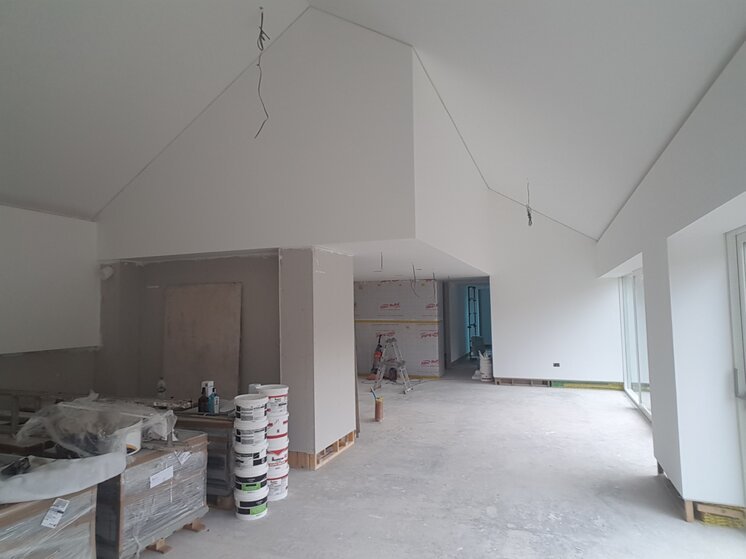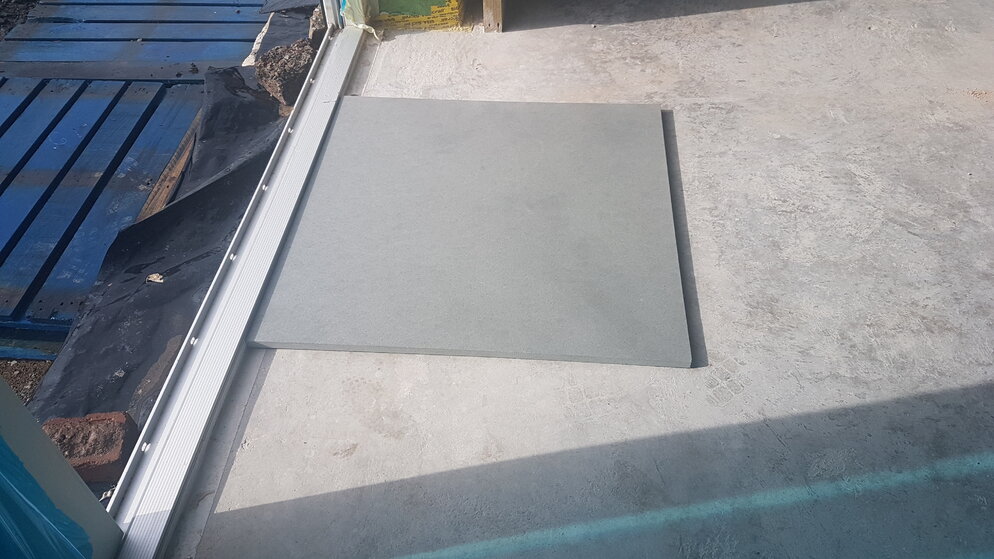S
Stuart_AC
Hi All..
This is my first post here – I usually lurk around and find this site very useful for general info. I’m looking for some product advice (and general advice) for a tiling job I’m doing at my house.
Details
Floor Area - 145m2
Tile - 800x800x20mm Pietra Serena Sandstone in light grey
Substrate – 12 month old concrete slab, no underfloor heating, level to about 4mm across it’s entire length. Slab has been wet vacuumed so is generally dust free.
I plan on laying the tiles in accordance with this video
1. Lay tiles with Mapei Elastorapid Adhesive with 10mm notch trowel and back butter entire tile. I'm not planning to use a primer as the slab is as dust free as you can get in a new build. Mapei say that it's not required with their product.
2. Seal with pre-treatment Fila PRW200
3. Grout with Mapei Keracolour 113GG
4. Clean with Fila Cleaner
5. Grease resistant treatment with W68 Fila Jet Matt Satin
Questions
1. Has anyone used a cheaper fast drying adhesive product that is compatible with sandstone? The Mapei stuff seems to be very expensive.
2. Same with grout – anyone used a more cost effective grout that can be used with sandstone?
3. Am I using the correct trowel notch?
4. The vast majority of the cut tiles will be hidden under the skirting. I don’t have a tile cutter and a decent bridge saw for 800mm tiles looks like it will be £800 odd quid. Could I get away with a handheld saw with a guide rail? Does anyone have any recommendations?
Thanks for your help in advance.
Stuart
This is my first post here – I usually lurk around and find this site very useful for general info. I’m looking for some product advice (and general advice) for a tiling job I’m doing at my house.
Details
Floor Area - 145m2
Tile - 800x800x20mm Pietra Serena Sandstone in light grey
Substrate – 12 month old concrete slab, no underfloor heating, level to about 4mm across it’s entire length. Slab has been wet vacuumed so is generally dust free.
I plan on laying the tiles in accordance with this video
1. Lay tiles with Mapei Elastorapid Adhesive with 10mm notch trowel and back butter entire tile. I'm not planning to use a primer as the slab is as dust free as you can get in a new build. Mapei say that it's not required with their product.
2. Seal with pre-treatment Fila PRW200
3. Grout with Mapei Keracolour 113GG
4. Clean with Fila Cleaner
5. Grease resistant treatment with W68 Fila Jet Matt Satin
Questions
1. Has anyone used a cheaper fast drying adhesive product that is compatible with sandstone? The Mapei stuff seems to be very expensive.
2. Same with grout – anyone used a more cost effective grout that can be used with sandstone?
3. Am I using the correct trowel notch?
4. The vast majority of the cut tiles will be hidden under the skirting. I don’t have a tile cutter and a decent bridge saw for 800mm tiles looks like it will be £800 odd quid. Could I get away with a handheld saw with a guide rail? Does anyone have any recommendations?
Thanks for your help in advance.
Stuart



